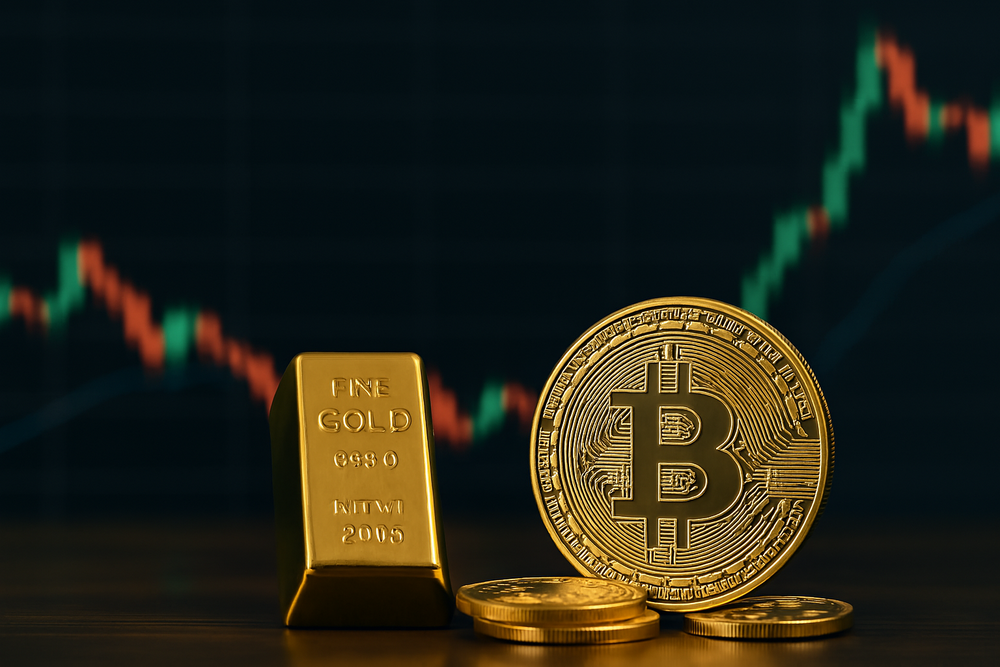Gold price (XAU/USD) halts its four-day losing streak, trading around $3,950 per troy ounce during the Asian hours on Thursday. Gold prices gain ground as continued central bank purchases and renewed ETF inflows have tightened the supply of metal in both official and exchange channels.
However, the non-yielding Gold faced challenges after Federal Reserve Chair Jerome Powell stated at the post-meeting press conference that another rate cut in December is far from certain, emphasizing that the path forward remains uncertain. These cautious remarks pushed the yield on the 10-year Treasury above 4%, increasing the opportunity cost of holding non-yielding bullion. The Fed delivered a widely anticipated 25 basis point interest rate cut on Wednesday.
Fed Chair Powell added that the available data indicate little change in the outlook for employment and inflation since the September meeting. He noted that the government shutdown will weigh on economic activity while it continues, but should reverse once it ends.
Moreover, the Fed acknowledged it would continue to ease back on Quantitative Easing (QE) practices, with the process of drawing down the Fed’s mortgage-backed asset balance sheet into long-term Treasuries by December 1. Gold, which thrives in easy-money environments, faced downward pressure as investors expect higher yields and a stronger US Dollar (USD).
The precious metals like Gold face challenges due to improved market sentiment, fueled by optimism over the potential for a trade deal between the United States (US) and China. US President Donald Trump and Chinese President Xi Jinping are set to meet later today in South Korea.
Gold FAQs
Gold has played a key role in human’s history as it has been widely used as a store of value and medium of exchange. Currently, apart from its shine and usage for jewelry, the precious metal is widely seen as a safe-haven asset, meaning that it is considered a good investment during turbulent times. Gold is also widely seen as a hedge against inflation and against depreciating currencies as it doesn’t rely on any specific issuer or government.
Central banks are the biggest Gold holders. In their aim to support their currencies in turbulent times, central banks tend to diversify their reserves and buy Gold to improve the perceived strength of the economy and the currency. High Gold reserves can be a source of trust for a country’s solvency. Central banks added 1,136 tonnes of Gold worth around $70 billion to their reserves in 2022, according to data from the World Gold Council. This is the highest yearly purchase since records began. Central banks from emerging economies such as China, India and Turkey are quickly increasing their Gold reserves.
Gold has an inverse correlation with the US Dollar and US Treasuries, which are both major reserve and safe-haven assets. When the Dollar depreciates, Gold tends to rise, enabling investors and central banks to diversify their assets in turbulent times. Gold is also inversely correlated with risk assets. A rally in the stock market tends to weaken Gold price, while sell-offs in riskier markets tend to favor the precious metal.
The price can move due to a wide range of factors. Geopolitical instability or fears of a deep recession can quickly make Gold price escalate due to its safe-haven status. As a yield-less asset, Gold tends to rise with lower interest rates, while higher cost of money usually weighs down on the yellow metal. Still, most moves depend on how the US Dollar (USD) behaves as the asset is priced in dollars (XAU/USD). A strong Dollar tends to keep the price of Gold controlled, whereas a weaker Dollar is likely to push Gold prices up.
Source: https://www.fxstreet.com/news/gold-price-forecast-xau-usd-holds-gains-near-3-950-amid-central-bank-purchases-202510300200


